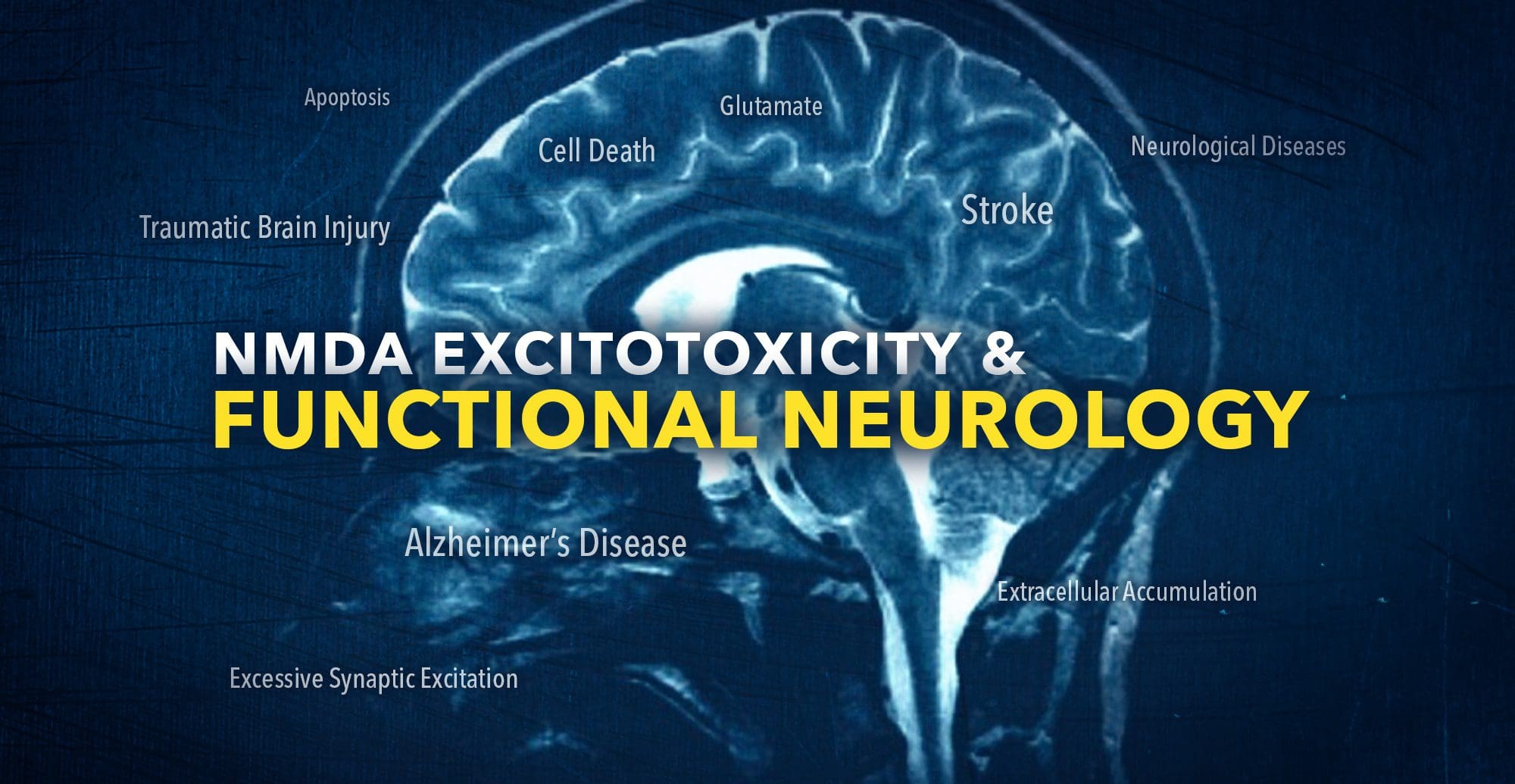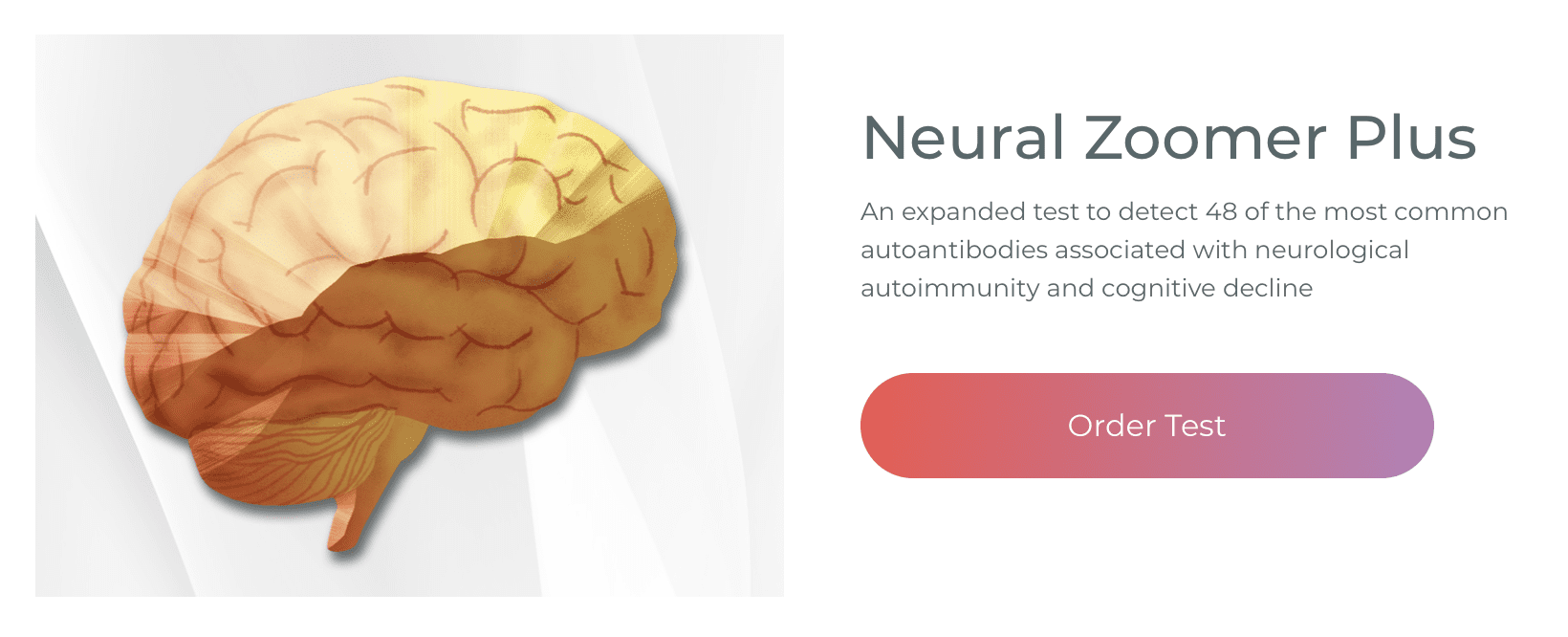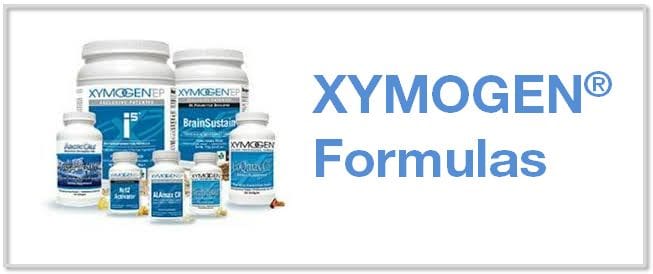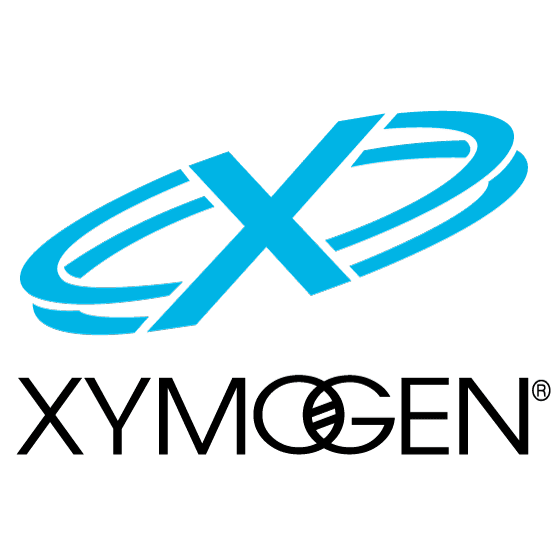Excitotoxicity is a pathological mechanism seen in a variety of health issues where an excessive synaptic excitation causes neuronal death and is also believed to be caused by the extracellular accumulation of the excitatory neurotransmitter glutamate, which triggers and connects ionotropic N-methyl-D-aspartate glutamatergic receptors (NMDARs) in the brain. Generally, NMDARs regulate and maintain calcium in cells to help manage physiological mechanisms like synaptic plasticity and memory, however, excessive stimulation can ultimately increase intracellular calcium which triggers cell death signaling to activate apoptosis. This pathological mechanism has been suggested in a variety of health issues, such as traumatic brain injury (TBI) and Alzheimer’s disease (AD), where it is extensively examined to understand health issues and treatment approaches. In a stroke, excitotoxicity has been shown to be the main pathological mechanism where neuronal damage happens and it is considered to be a well-known goal for many recent attempts at developing stroke therapeutics.
Stroke is an acute brain health issue which causes neuronal damage which has currently no safe and effective neuroprotective treatment approaches. Immediately following a stroke, the brain tissue loses blood perfusion and the center of the infarct deteriorates quickly. This then causes milder ischemia and many brain cells or neurons will result in delayed death which can take up to several hours or even days. Research studies show that the mechanism of cell death is mainly NMDA receptor-dependent excitotoxicity. In ischemic areas, extracellular glutamate levels increase while preventing glutamate release, synaptic activity, or NMDAR activation which was capable of limiting cell death in a variety of stroke models. Thus, preventing excitotoxicity is an important treatment approach for reducing brain damage and improving patient outcome measures following a stroke, and this has definitely encouraged extensive efforts towards developing NMDA receptor-based stroke treatment approaches over the last two decades. Unfortunately, these have largely met with rather disappointing results. Several research studies have failed to find the expected efficiency of NMDAR for decreasing brain injuries. The reasons behind the basic research study results and clinical trials are still unknown, however, several reasons have been suggested. These include, but are not limited to, the inability to utilize the correct doses necessary for neuroprotection due to their side-effects, the inability to use the drugs within their neuroprotective windows, poor experimental designs, and heterogeneity in the patient population. However, as we will briefly summarize in the following article, improvement in our understanding of the physiological and pathological mechanisms of NMDAR activation as well as the different pathways connected to different NMDAR subtypes, has allowed researchers to develop new treatment approaches which improve therapeutic windows and increase specificity for death signaling pathways, achieving neuroprotection without interrupting other essential signaling pathways downstream of the NMDAR receptor.
Table of Contents
Neuroprotectants Targeting NMDAR Subtypes
NMDAR subtypes have different purposes in excitotoxicity and physiology. The NMDAR is a receptor which generally has two GluN1, also known as NR1, subunits as well as two subunits from the GluN2 subfamily (GluN2A-2D, also known as NR2A-2D). In the cortex, the major subpopulations of NMDARs are GluN2A- or GluN2A and 2B-containing receptors. GluN2A-containing receptors are found in synapses whereas GluN2B-containing receptors are found on extrasynaptic membranes. GluN2A- and GluN2B-containing receptors are different from each other because they regulate and manage plasticity, favoring either long-term potentiation (GluN2A) or depression (GluN2B) through a variety of electrophysiological and pharmacological properties as well as signaling proteins. In addition, these receptors play a fundamental role in promoting cell survival (GluN2A) or death (GluN2B) after excitotoxic stimulation. Because GluN2A-containing receptors are mainly focused on synapses while GluN2B-containing receptors are focused to both synaptic and extrasynaptic membranes, when excitotoxic conditions cause glutamate to extend beyond synapses, GluN2B-mediated death signaling becomes stronger in comparison to survival signaling which ultimately results in death. Through a stroke, by way of instance, NMDARs are less likely to favor cell survival and can instead cause detrimental effects by preventing considerable normal physiological purposes. Selfotel, a non-specific NMDAR blocker, was neuroprotective against stroke in vitro and in vivo, however, it ultimately failed to be neuroprotective against stroke in clinical trials by causing a variety of intolerable side-effects.
Treatment strategies to reduce undesirable side-effects, including glycine site antagonists and NMDAR subtype-specific improvements, was to target the allosteric glycine binding regions on the GluN1 subunits with licostinel and gavestinel instead of directly blocking the receptor. These drug candidates performed well in preclinical examinations, however, they also failed as a result of low efficiency despite minimal side-effect profiles. The negative side-effects were perhaps due to a missed window of time following a stroke that shows which receptor blockers are safe and effective in preventing death.
Better treatment methods and techniques for reducing unwanted side-effects of NMDAR are to utilize the differences between their variations. By way of instance, the GluN2B-specific inhibitor traxoprodil is neuroprotective in stroke research studies and minimal side-effects, however, it has also failed in clinical trials. Similar to the glycine region antagonists, it possibly needs to be properly regulated and managed to function efficiently. GluN2A agonists should promote cell survival signaling which could allow recovery following a stroke as well as cell survival to prevent passing signaling. As a matter of fact, activation of GluN2A-containing receptors utilizing increased doses of glycine was neuroprotective in an animal model of stroke but further research studies must examine GluN2A activation as a treatment approach in human participants.
While NMDAR antagonists and modulators are safe and effective at attenuating excitotoxicity in experimental versions, their shortcoming is the challenge in implementing treatment approaches early to coincide with the summit of excitotoxic glutamate release. Stroke patients frequently have no chance of receiving these treatment approaches in time. However, the health issue can be avoided if receptor blockers can be utilized in at-risk populations. One research study has shown that low doses of prophylactic memantine, an NMDAR non-competitive antagonist with few side-effects, can considerably decrease brain injury and functional deficits following a stroke. Whether any medications are tolerable, safe, and effective when taken this way remains to be demonstrated but innovative solutions may nevertheless address how to deliver those drugs.
One factor apart from those of the failed clinical trials is the interplay of NMDARs in cell survival which may be completely misunderstood. In the last few decades, there has been accumulating evidence that synaptic NMDARs may also cause cell death and GluN2A, as well as GluN2B, do not necessarily have dichotomous functions in excitotoxicity. Further research studies may be required to demonstrate more nuanced receptor inhibitor strategies and to solve this controversy.
Neuroprotectants Targeting Cell Death Signaling
A treatment approach for NMDAR inhibitors is to focus on the most downstream events for cell death which happen over a much longer time period following receptor activation. A variety of cell death pathways following activation have been determined and several groups have provided proof-of-principle evidence that these pathways can be regulated and managed with the utilization of peptides to ultimately protect brain cells or neurons without any side-effects.
The oldest reported and most explored peptide strategy in stroke goals is nitrous oxide synthase (nNOS)-mediated cell death. NNOS connects to postsynaptic protein 95 (PSD95) which then connects to the C-terminal tail of the GluN2B subunit. NOS is a calcium-activated enzyme which activates the development of nitric oxide (NO) and its own status in the receptor complex which associates it in proximity to the focused stream of calcium entering activated GluN2B. In a stroke, the excessive calcium influx activates GluN2B-coupled nNOS. An interference peptide is utilized to disconnect the complex to prevent NO development. The peptide, Tat-NR2B9c, is made up of an HIV-1 Tat-derived cell penetration sequence which allows passage through the blood-brain barrier and cell membranes, connected to a copy of the region on the GluN2B for PSD95. The peptide and GluN2B disconnect PSD95, therefore, decoupling nNOS in the local considerable levels of calcium without interrupting the function of the receptor from different pathways. Utilization results in considerable protection against tissue and functional damage with no side-effects in vitro and in vivo after a single dose given before or after ischemia in vivo. The peptide has lately succeeded in Phase II clinical trial where it decreased iatrogenic infarcts during intracranial aneurysm treatment. This is the first time a research study has demonstrated efficiency in humans which also shows authenticity that targeting downstream cell death can be helpful against excitotoxic/ischemic neuronal injuries.
While the utilization of peptides in a clinical setting is safe and effective, a similar efficiency has been achieved with small molecule drugs which act on the exact same goal and function like the peptides in a laboratory setting. To mimic Tat-NR2B9c, two small molecules, IC87201 and ZL006 have been individually demonstrated to compete at the identical GluN2B-specific connecting region without affecting the connection of PSD95 to other proteins. Additionally, ZL006 imitates the peptide’s neuroprotection without causing any considerable adverse side-effects. By identifying the goals and the specific regions, research studies can simulate small molecule drugs and accelerate their discovery towards excitotoxicity and stroke.
Other GluN2B-specific pathways have been demonstrated in a similar manner and are showing promise in the stages of development. One such pathway which is triggered following GluN2B activation is the potentiation and recruiting of GluN2B in the cell membrane by death-associated protein kinase 1 (DAPK1). DAPK1 is a protein which connects to calmodulin to activate apoptosis but it is phosphorylated in an inactive form which is incapable of associating cell death and calmodulin. Following excitotoxicity, calcineurin activation dephosphorylates and triggers DAPK1, contributing to cell death. Furthermore, active DAPK1 can connect to and phosphorylate the C-terminal tail of receptors, excitotoxicity, and their function, aggravating calcium influx. A Tat-linked interference peptide which has the C-tail phosphorylation region which is GluN2B managed to block the interaction of active DAPK1 with GluN2B and promote excitotoxicity. Once the peptide was utilized in mice, dubbed Tat-NR2B-CT, it improved the outcome following ischemia. However, Tat-NR2B-CT was only efficient at preventing activity and runaway insertion instead of the downstream apoptotic of DAPK1 signaling. Researchers were also able to connect and guide DAPK1 towards lysosomes by including a sequence in the close of the hindrance peptide to create a degradation peptide. The result has been a serious and temporary fall in busy DAPK1 levels with a corresponding decrease in infarction when administering the peptide hours after ischemia, according to several research studies.
The c-Jun N-terminal kinase 3 (JNK) acts upon many pathways and is a mediator for cell death in excitotoxicity. JNK interacting protein (JIP) connects and prevents JNK activity through a JNK binding domain (JBD) which spans over 20 residues. When these residues are connected to Tat as from the Tat-JBD20 interrupted peptide, they are capable of limiting JNK activity and preventing cell death in stroke models when administered before or after ischemia. The Tat-JBD20 peptide has also been shown utilizing D-amino acids instead of L-amino acids to withstand degradation by endogenous proteases. Doing so tremendously increases the peptide’s half-life and doesn’t negatively affect its binding affinity and selectivity, demonstrating that this alteration may be utilized for several interference peptides to boost efficiency and bioavailability.
New targets are always being discovered. While currently, no new stroke treatment approaches are being utilized, a great deal of progress has been made by targeting the processes which occur during stroke towards creating treatment approaches. With the debut of the achievement of degradation and interruption peptides targeting GluN2B-specific passing signaling events, there’s hope that new treatments are on the horizon for health issues which have excitotoxicity.

Excitotoxicity is the pathological mechanism by which brain cells or neurons are ultimately damaged or eliminated by excessive stimulation from neurotransmitters, including glutamate and other similar substances. This ultimately occurs when the NMDA receptor and the AMPA receptor are overactivated by excitatory neurotransmitter glutamate receptors. This can cause a variety of processes which can damage cell structures, including components of the cytoskeleton, membrane, and DNA. Regulating and managing excitotoxicity can help maintain overall well-being. – Dr. Alex Jimenez D.C., C.C.S.T. Insight
Neuropathy Treatment with LLLT
Excitotoxicity is a pathological mechanism where an excessive synaptic excitation causes neuronal death and is also believed to be caused by the extracellular accumulation of the excitatory neurotransmitter glutamate, which triggers and connects ionotropic N-methyl-D-aspartate glutamatergic receptors (NMDARs) in the brain. This pathological mechanism has been suggested in a variety of health issues, such as traumatic brain injury (TBI) and Alzheimer’s disease (AD), where it is extensively examined to understand health issues and treatment approaches. The scope of our information is limited to chiropractic, musculoskeletal and nervous health issues as well as functional medicine articles, topics, and discussions. To further discuss the subject matter above, please feel free to ask Dr. Alex Jimenez or contact us at 915-850-0900 .
Curated by Dr. Alex Jimenez
References
- Li, Victor, and Yu Tian Wang. “Molecular Mechanisms of NMDA Receptor-Mediated Excitotoxicity: Implications for Neuroprotective Therapeutics for Stroke.” Neural Regeneration Research, Medknow Publications & Media Pvt Ltd, Nov. 2016, www.ncbi.nlm.nih.gov/pmc/articles/PMC5204222/.
Additional Topic Discussion: Chronic Pain
Sudden pain is a natural response of the nervous system which helps to demonstrate possible injury. By way of instance, pain signals travel from an injured region through the nerves and spinal cord to the brain. Pain is generally less severe as the injury heals, however, chronic pain is different than the average type of pain. With chronic pain, the human body will continue sending pain signals to the brain, regardless if the injury has healed. Chronic pain can last for several weeks to even several years. Chronic pain can tremendously affect a patient’s mobility and it can reduce flexibility, strength, and endurance.
Neural Zoomer Plus for Neurological Disease
Dr. Alex Jimenez utilizes a series of tests to help evaluate neurological diseases. The Neural ZoomerTM Plus is an array of neurological autoantibodies which offers specific antibody-to-antigen recognition. The Vibrant Neural ZoomerTM Plus is designed to assess an individual’s reactivity to 48 neurological antigens with connections to a variety of neurologically related diseases. The Vibrant Neural ZoomerTM Plus aims to reduce neurological conditions by empowering patients and physicians with a vital resource for early risk detection and an enhanced focus on personalized primary prevention.
Formulas for Methylation Support
XYMOGEN’s Exclusive Professional Formulas are available through select licensed health care professionals. The internet sale and discounting of XYMOGEN formulas are strictly prohibited.
Proudly, Dr. Alexander Jimenez makes XYMOGEN formulas available only to patients under our care.
Please call our office in order for us to assign a doctor consultation for immediate access.
If you are a patient of Injury Medical & Chiropractic Clinic, you may inquire about XYMOGEN by calling 915-850-0900.
For your convenience and review of the XYMOGEN products please review the following link.*XYMOGEN-Catalog-Download
* All of the above XYMOGEN policies remain strictly in force.
Post Disclaimer
Professional Scope of Practice *
The information on this blog site is not intended to replace a one-on-one relationship with a qualified healthcare professional or licensed physician and is not medical advice. We encourage you to make healthcare decisions based on your research and partnership with a qualified healthcare professional.
Blog Information & Scope Discussions
Welcome to El Paso's Premier Wellness and Injury Care Clinic & Wellness Blog, where Dr. Alex Jimenez, DC, FNP-C, a board-certified Family Practice Nurse Practitioner (FNP-BC) and Chiropractor (DC), presents insights on how our team is dedicated to holistic healing and personalized care. Our practice aligns with evidence-based treatment protocols inspired by integrative medicine principles, similar to those found on this site and our family practice-based chiromed.com site, focusing on restoring health naturally for patients of all ages.
Our areas of chiropractic practice include Wellness & Nutrition, Chronic Pain, Personal Injury, Auto Accident Care, Work Injuries, Back Injury, Low Back Pain, Neck Pain, Migraine Headaches, Sports Injuries, Severe Sciatica, Scoliosis, Complex Herniated Discs, Fibromyalgia, Chronic Pain, Complex Injuries, Stress Management, Functional Medicine Treatments, and in-scope care protocols.
Our information scope is limited to chiropractic, musculoskeletal, physical medicine, wellness, contributing etiological viscerosomatic disturbances within clinical presentations, associated somato-visceral reflex clinical dynamics, subluxation complexes, sensitive health issues, and functional medicine articles, topics, and discussions.
We provide and present clinical collaboration with specialists from various disciplines. Each specialist is governed by their professional scope of practice and their jurisdiction of licensure. We use functional health & wellness protocols to treat and support care for the injuries or disorders of the musculoskeletal system.
Our videos, posts, topics, subjects, and insights cover clinical matters and issues that relate to and directly or indirectly support our clinical scope of practice.*
Our office has made a reasonable effort to provide supportive citations and has identified relevant research studies that support our posts. We provide copies of supporting research studies available to regulatory boards and the public upon request.
We understand that we cover matters that require an additional explanation of how they may assist in a particular care plan or treatment protocol; therefore, to discuss the subject matter above further, please feel free to ask Dr. Alex Jimenez, DC, APRN, FNP-BC, or contact us at 915-850-0900.
We are here to help you and your family.
Blessings
Dr. Alex Jimenez DC, MSACP, APRN, FNP-BC*, CCST, IFMCP, CFMP, ATN
email: coach@elpasofunctionalmedicine.com
Licensed as a Doctor of Chiropractic (DC) in Texas & New Mexico*
Texas DC License # TX5807
New Mexico DC License # NM-DC2182
Licensed as a Registered Nurse (RN*) in Texas & Multistate
Texas RN License # 1191402
ANCC FNP-BC: Board Certified Nurse Practitioner*
Compact Status: Multi-State License: Authorized to Practice in 40 States*
Graduate with Honors: ICHS: MSN-FNP (Family Nurse Practitioner Program)
Degree Granted. Master's in Family Practice MSN Diploma (Cum Laude)
Dr. Alex Jimenez, DC, APRN, FNP-BC*, CFMP, IFMCP, ATN, CCST
My Digital Business Card





